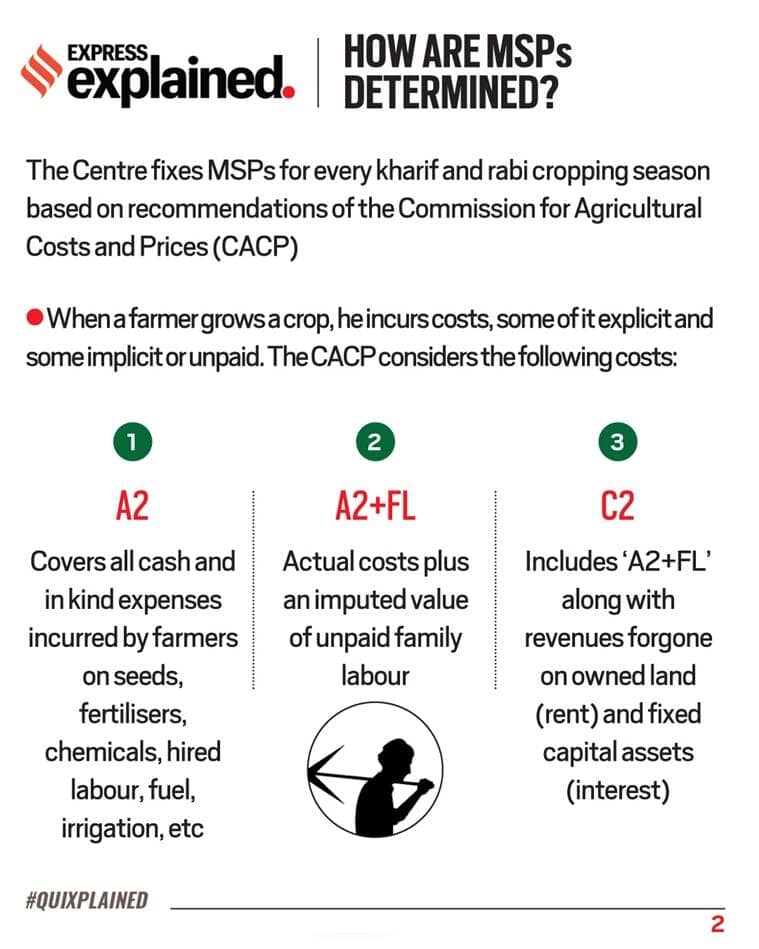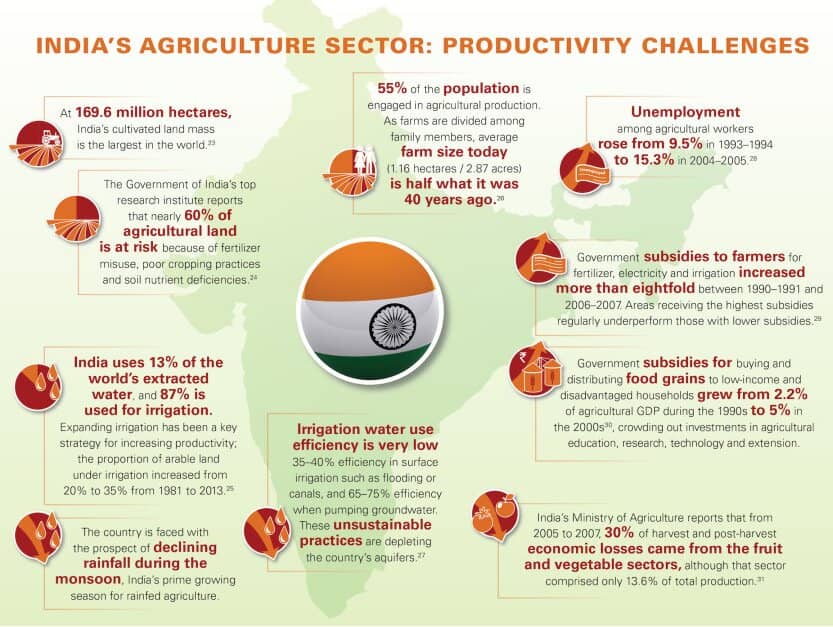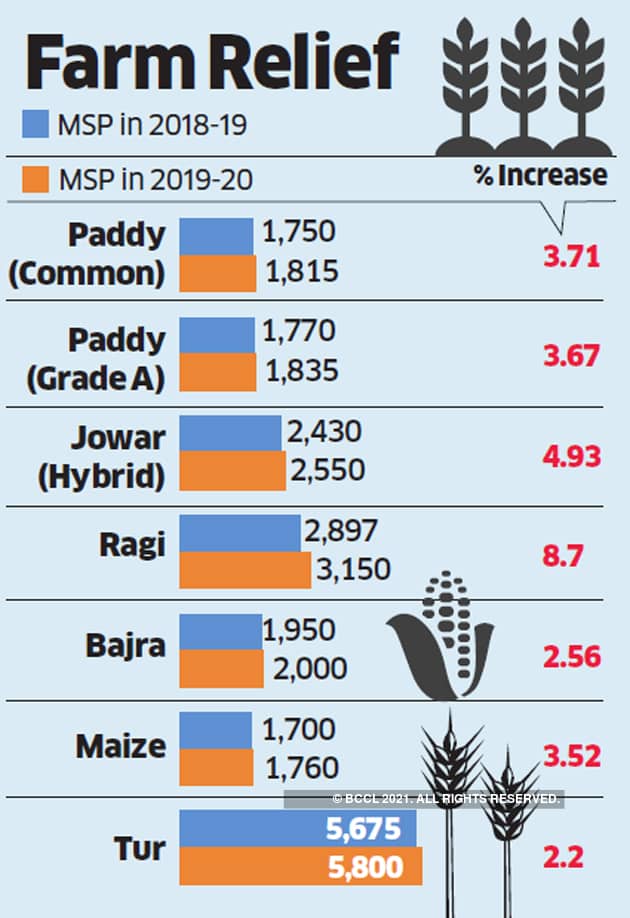Agricultural sector is the largest employment generator in India. Agricultural products have consistently been a trade surplus for India over the years. Despite this, it contributes less than 15% to the country’s GDP. The parliament passed the three farm bills in September, 2020, which were then signed into law by the president. Bills (now Acts) enacted by the government have caused a great deal of outrage among the opposition and been met with protests across the country by farmers’ organizations. There is no program or reform that addresses the income-employment asymmetry in the agriculture sector.
Indian agriculture faces a deplorable state of affairs so these projects are meant to draw private investment. The three bills are namely, the Farmers’ Produce Trade and Commerce (Promotion and Facilitation) Bill, 2020, Farmers (Empowerment and Protection) Agreement of Price Assurance, Farm Services Bill, 2020, and the Essential Commodities (Amendment) Bill, 2020.
The majority of Indian farmers sell their produce at government-controlled wholesale markets called ‘mandis’. The biggest change is the ability for farmers to sell their produce directly to private parties – such as agricultural businesses, supermarket chains, and online retailers.

Farmer groups fear these bills may take away the Minimum Support Price (MSP) safety net from beneath their feet as they lay out the framework for allowing farmers to sell directly to corporates. They also establish rules for contract farming, where farmers tailor their production to meet the needs of specific buyers; and they permit private buyers to hold essential commodities for future sales. Only government-authorized agents could do this before.
The reforms, at least on paper, give farmers the option of selling outside of this so-called “mandi system” hence they have the option to earn more but the problem lies here. Farmers are not sure how this is going to work or is it going to work at all when the full control goes to these private owners.
There are main concerns from farmers that this may eventually mean the end of wholesale markets and assured prices, leaving them without any alternative. This means that they cannot use it during negotiations as a bargaining chip to return to the mandi if they are not satisfied with the price offered by a private buyer.
A few farmers currently enjoy the benefits of Minimum Support Prices (MSPs) based procurement in the country, which is why the demand for the inclusion of MSP into the law is vested interests.
MSP was the cornerstone of agricultural reforms in Punjab, Haryana and Western Uttar Pradesh, but agricultural practices have prevented reforms and these changes will result in an agricultural crisis. Despite the MSP price, farming has not always been profitable in India. For farmers, MSPs provide a guaranteed return of 50 percent over production costs according to the government.

The government determines this mark-up based on the A2+FL cost measure. Included in this category are costs incurred on hired labour, imputed family labour, seeds, fertilizers, insecticides, irrigation charges, interest on working capital, land revenues, depreciation on farm buildings and implements, and rent paid for leased-in land. Over the years, farmers’ organizations have argued that harvest share programs should provide a 50% return over the cost measure C2, which also includes rent on own land and interest on fixed capital. The opportunity cost of farming is included in C2.
Farmers have the option of renting their land and using their fixed capital for other sources of income rather than farming. Comparing MSPs for rice and wheat with these two cost measures reveals that they do not cover all the costs associated with C2. Due to the time lag involved in the release of cost measures, a comparison for recent years cannot be made. Farmers are exploited by intermediaries; where they are forced to sell their products at extremely low prices by agricultural produce market committees (APMCs).
The first bill which has been passed, Farmers’ Produce Trade and Commerce (Promotion and Facilitation) Bill, 2020 proposes an electronic trading in transaction platform for ensuring a seamless trade electronically. Keeping in mind the small farmers or the marginal farmers, who produce very little and hence can supply the bare minimum, will they be able to afford this?

According to one of the International Monetary Fund (IMF) reports which is sourced from the Economic Times, it firmly believes that the farm bills passed by the Indian government have the potential to be a significant step for agricultural reforms. One of the spokespersons has said: “The measures will enable farmers to directly contract with sellers, allow farmers to retain a greater share of the surplus by reducing the role of middlemen, enhance efficiency and support rural growth”.
The protests mainly demand the transparency of the farm bills regarding the MSPs. The farmers’ protests are dominated by slogans calling for protection of MSPs, or minimum support prices, which they feel are being threatened by new laws. The Central Government purchases 23 crops annually at these rates, regardless of market rates, and they are announced at the beginning of the planting season for each crop. Although most crops don’t get MSP rates, the Shanta Kumar Committee’s 2015 report using data from the National Sample Survey shows that the Centre purchases paddy, wheat and select pulses at large volumes and that only 6% of farmers actually sell their crops.
All of the laws enacted have no direct impact on the MSP regime. Punjab, Haryana, and a few other States, however, have majority of their government procurement centres located within APMC mandis. Agriculture being the backbone of the state of Punjab, majority of the population is engaged in agriculture and its different allied activities.Hence, the chief source of income is farming. A reduction in government procurement could result from the encouraging of tax-free private trade outside the APMC mandis, as farmers fear this will make these notified markets unviable.
India could focus on two things at present: increase the yields or increase the prices. It has to invest an impressive amount of money on agricultural development and research which in turn will eventually point out that just ensuring freedom to farmers would not lead to agricultural development. Many data also support that the MSPs have in fact increased at a very low rate over the years. Below is a synopsis of some common crops and their respective MSPs over the years 2018-2019 and 2019-2020.

A further demand from farmers is that MSPs be made universal, both within and outside mandis, so that all buyers – whether government or private – must use them as a floor price below which no sales will be allowed. Despite the government’s declaration of MSPs for crops, there is no law that mandates how they will be implemented.
There is no statutory backing for MSP in the Farmers’ Produce Trade and Commerce (Promotion and Facilitation) Bill. It is the MSP, a price at which the farmers sell their produce, that has nothing to do with the legal system. There is not even a reference to “MSP” or “Procurement” in that law. The mandis being removed, the farmers cannot be assured about the price they would get once they have to trade their supplies with the big firm owners and the corporates.
Safety nets should be provided to these marginal farmers so that they do not lose out on the bare minimum income. Policies concerning those who will be adversely affected due to the new Acts should also be made.
Written by- Indrani Mukherjee
Edited by- Khyati Kallianpur




